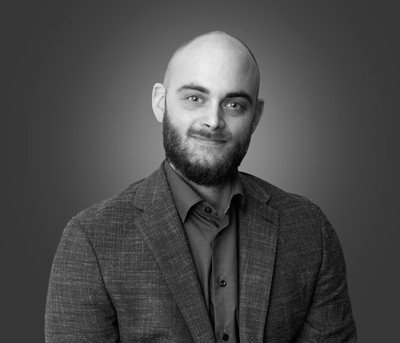In this blog post we will keep looking at the highlights of the news for Simcenter STAR-CCM+ version 2021.2. This version of the software was released last week and contains several improvements worth highlighting. This time we will focus mainly on multiphase features, both those in the Eulerian and Langrangian frameworks.
Fluid Film and AMR
It is now possible to combine fluid film with Adaptive Mesh Refinement (AMR). This now invites the hybrid multiphase approach to many industrial applications not previously considered or that was too expensive to solve. Often the Fluid film is used together with VOF (Volume of Fluid). VOF is preferably used with free-surface AMR to keep the total cell count at a reasonable level. Before where fluid film was required together with VOF to solve the relevant physics, the user was forces to use a static mesh. But now these approaches can be used together. The way this is performed now is that the first cell layer closest to the wall is shielded from the AMR. This means that the film will not be affected at all, instead putting the refinement on the bulk section of the mesh, where it is most often better needed.
This new feature is a large step toward the democratization of hybrid multiphase. Where before, the user needed to put effort in realizing where the static mesh needed to be refined prior to running the simulation. Now, the free VOF surface can be resolved even with a relatively coarse initial mesh, and without knowledge of where refinements will be needed. Some effort still needs to be put on the surface mesh to resolve the geometry and the fluid film.
The example below shows a full multiphase cycle, where no effort is put to the bulk mesh. The mesh is coarse through the volume. This example starts with a liquid (VOF) in a glass, which is poured out onto a plate to form Fluid Film, which in turn strips into Lagrangian droplets at the lower edge of the plate. The LMP droplets then impinge back into Fluid Film on the wall of the lower glass, before finally pooling into VOF.
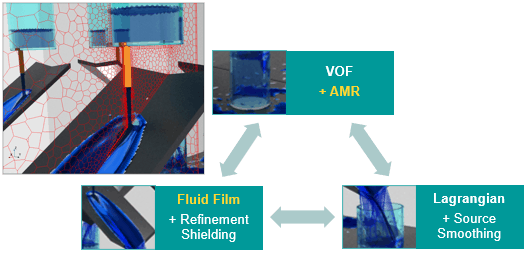
The picture below shows the results from a comparison for an industrial case. A dishwasher is run with and without the AMR. In the AMR case the mesh size was much smaller than that of the static case. The simulations produced similar results which can be seen by the picture. With AMR the case ran 2.75x faster.
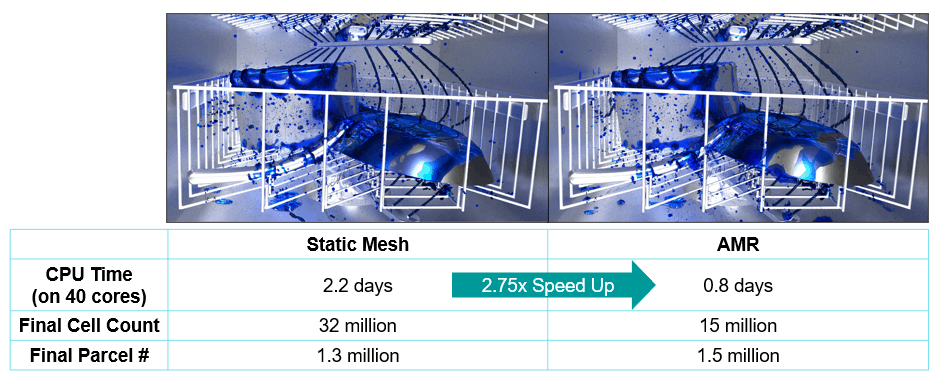
Improved mapping and reconstruction of free surface after AMR
With the democratisation of hybrid multiphase and its applicability with fluid film and VOF there is also a need for correct mapping of a solution from a coarse start guess onto the first mesh refinement once the simulation is started. Looking at the picture below, the initial mesh is too coarse to properly resolve the wave. In previous versions of Simcenter STAR-CCM+ the AMR would look like the middle picture, simply putting the result from the coarse mesh on top a refined mesh. But now, in version 2021.2, the free surface is reconstructed when the AMR is applied to match the initial intent.
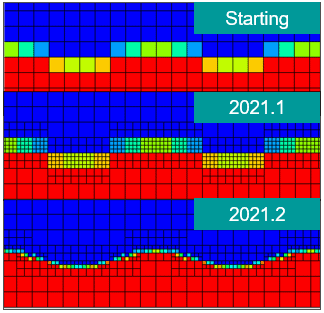
S-Gamma for Mixture Multiphase (MMP)
In Simcenter STAR-CCM+ there are two population balances available for EMP. One of these, the S-gamma model, has now been made available for MMP. For most practical applications the bubble and droplet size follow a distribution, as opposed to constant sizes. For a proper description of drag and slip between phases this addition is much needed since the slip between phases is a function of the droplet or bubble size of the dispersed phase. The S-Gamma model also includes breakup and coalescence models.
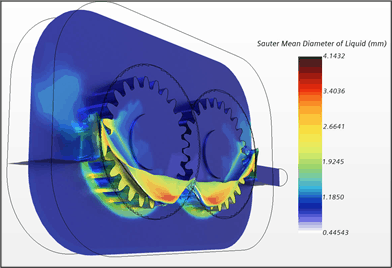
Transition boiling for single phase
Where transition boiling was previously only available for VOF it has as of version 2021.2 been made available for single phase. The transition boiling only accounts for the effects of boiling on conjugate heat transfer without generating any vapour phase. This assumption holds for boiling problems where very little vapour phase is generated. It allows for a cheap way of modelling boiling without considering multiphase. Speedup is seen around 1.2x, and robustness is improved due to the lack of a vapor phase.
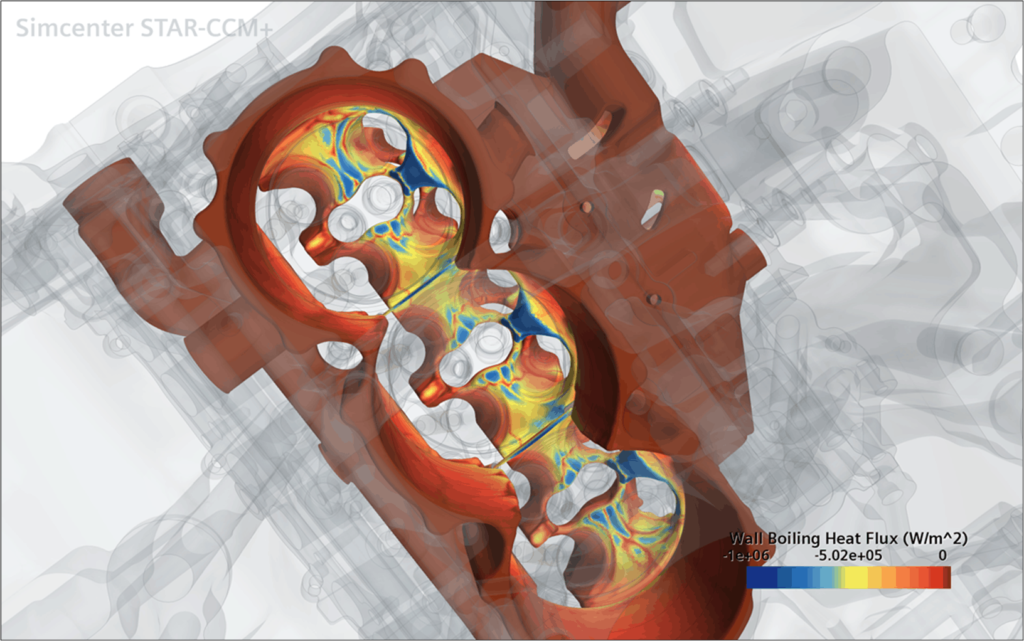
Adaptive Time step for EMP granular
The inclusion of adaptive timestep for granular flow with EMP can reduce the computational expense for these simulations. This will now allow the physics to decide the timestep-size and is especially useful for granular flow where the flow can move between fluidized and packed regimes.
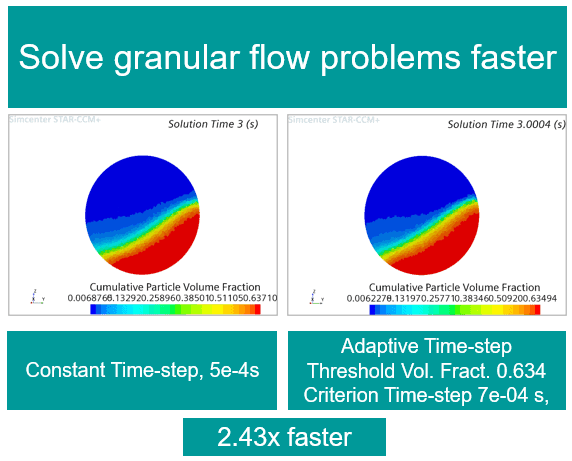
VOF-LMP resolved transition improvements
Additional criteria for the transition from VOF to Langrangian particles has been added. Where before only blob diameter decided when the VOF phase turned into a Lagrangian particle, now also the classical criteria sphericity is added as well. This is to allow those elongated ligaments that often are formed between immiscible fluids to be properly represented as VOF. It will more often be correct for those ligaments to break up into as number of particles at a later stage in time. Additionally, the criteria of blob inertia tensor eigenvalue ratio has been added to provide a more effective value for distinguishing between blobs and ligaments.

Particle attrition analysis
Within the DEM framework this new version allows for particle attrition (erosion by friction) analysis. Before erosion was only possible between walls and particles. The limitation for particle attrition is that is no effect from particle-wall collisions but only from particle-particle interaction. The physics of this application is complex, and academia is yet to produce any useful models for this application. Hence, a user-defined approach is adopted for this. The way this is done in Simcenter STAR-CCM+ is to add a new option of allowing for the Passive Scalar Transfer model to accumulate collision data on particles.
We hope that this gives those of you interested in Multiphase simulation a good view of the news for Simcenter STAR-CCM+ version 2021.2. Note that this is likely the last blogpost from the Volupe blog for a few weeks. The summer holidays are coming up and the blog will reset during those weeks. See you back again after the vacation period.
Author
Robin Victor, M.Sc.
support@volupe.com
+46731473121
